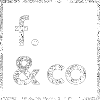27. Labels
"When I travel by air, I have to say that I am a clown to get my instruments to pass through security". Xavi Lozano, a professional musician and multi-talented craftsman, is the co-founder of a musical movement called "Bufa & Sons". A virtuoso both in the arts of music and in the manual construction of instruments, Lozano creates his own instruments from everyday objects, and uses them to reinterpret some classical sounds. At times, he produces instruments for others, such as the famous Residual Gurus. But for Lozano's practice – a combination of discourse, sound theory, engineering and musical creation – no pre-existing category seems to exist. Hence the difficulty when faced with the bluntness of some airport controllers.
What Lozano's rant shows is that the categorization of creativity in a limited set of pre-defined types of activities serves as a sort of institutional inertia that makes the work – and often, the lives – of true creators more difficult than anything. Having to choose between ever narrower types of work stems from a dated belief in the hyper-specialization of labour and is actually counterproductive in the realm of the creative economy. Our partners and friends from Studio 923a embody this contradiction beautifully. After the French State chose to eliminate the general category of "applied arts" (92.3a) and split it into a larger number of narrow specialized activities (graphic design, technical assistants, photographers, etc.), they retained the name as a brand, wfich allows to depict their work in all its subtleties.
In a recent position piece on the MosaiC website, I questioned the scientific purpose behind the notion of "creative industries". Such a broad denomination gives us the impression that all those who engage in the industries thus enclosed – editing, architecture, cinema, etc. – possess a sui generis creative nature that needn't be discussed. The study of creativity, I contend, requires that we review even (or rather, especially!) the categories of action we use to describe the work of the creators.
As academic research is increasingly funded by industry and special interests, the notion of creative this and creative that loses a lot of its legitimacy: it stems from – rather than feed into – many a research agreement in which scientists do little but provide a handful of graduates and, most importantly, a stamp of approval. As we find creative bureaucrats, engineers, accountants, we cannot abide by a system whose consequence is to induce an over-simplification of the creative universe, encompassing complex symbolic, sociological and economic phenomena and fitting them all in a series of statistical boxes.
On the contrary, several organizations and individuals are able to make use of transversal competencies in order to come up with novel propositions that do not "fit" any pre-existing ensemble. That is precisely why they are considered creative: they do not fit. Much like the clown-musician-stage performer-craftsman (and "misfit"!) Xavi Lozano would have it: "Some say labels are very important. I say they are not. What matters is what you do. It's the content; not the name you put on it." Doing something, here, is the operational concept. An idea we should all give a little bit more thought to, as we try to understand how to make sense of this incessant "creative" buzz. Lozano provides us with a reminder that the categories we use to describe creative activities are not what the true actors of creativity really care about.
This text is part of a series written in the context of the Fifth edition of the Montreal-Barcelona Summer School on Management of Creativity, organized by Mosaic HEC Montréal and Universitat Barcelona, July 9 to 24, 2013.
Illustration by Studio 923a. Read all posts in the series at blog.fandco.ca/yulbcn.


